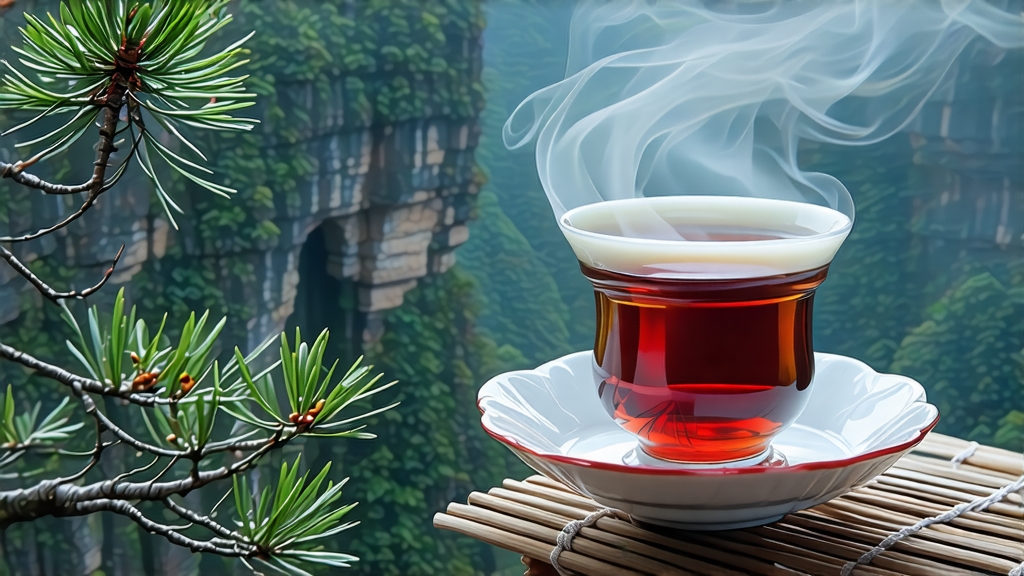
Long before Assam, Ceylon, or Earl Grey entered the global lexicon, a small village in the Wuyi Mountains of China’s Fujian province sent Europe its first taste of what would later be called “black tea.” That village was Tongmu, the leaf was Lapsang Souchong, and the year—according to the most persuasive shipping records—was 1604. Dutch merchants, already addicted to the green teas of Anxi, were startled by the copper-red liquor that survived the six-month voyage around the Cape of Good Hope without losing fragrance. By the time the cargo reached London coffeehouses, the English had coined the word “bohea” (from the local Wuyi pronunciation “Wu-i”) and a new morning ritual was born. In the centuries that followed, Lapsang Souchong became both the prototype of all black teas and, paradoxically, the most misunderstood: its haunting pine-smoke note dismissed as “tar-like” by some, revered as “cigar-box elegance” by others. Today, as specialty tea bars from Brooklyn to Berlin search for authenticity, Tongmu’s original craft is protected by Chinese national-origin legislation; every kilo of genuine Lapsang Souchong must be grown, withered, smoked, and packed within the 565-square-kilometer core zone of the Wuyi UNESCO reserve. Understanding this tea therefore means stepping into a microclimate where subtropical mists, mineral-rich granitic soil, and 800-year-old irrigation channels conspire to create a leaf that carries the memory of pine and stone in equal measure.
Botanically, Lapsang Souchong is made from the small-leaf cultivar Camellia sinensis var. sinensis, the same genetic pool that gives us Dragon-well and Bi Luo Chun, yet centuries of seed-saving in Tongmu have produced a local strain known affectionately as “cai cha” (vegetable tea). The bushes sit at 600–1,200 m above sea level, where diurnal swings of 15 °C force the plants to convert starches into aromatic amino acids. Spring plucking follows the lunar calendar: only the standard “two leaves and a bud” picked before Qingming (early April) is deemed worthy of the highest grade, called Zheng Shan Xiao Zhong. After Qingming, the same bushes yield a slightly coarser leaf sold domestically as Waishan Xiao Zhong, a useful distinction for buyers who want the perfume without the price of pre-rain scarcity.
Processing begins within minutes of plucking. The leaves are first spread 3 cm thick on bamboo trays set in the upper story of a three-level wooden house; large windows are thrown open to invite a 28 °C breeze that withers moisture for eight hours, softening cell walls without bruising. Once the leaf feels like supple leather, rollers mimicking the motion of traditional kneading boards apply 12 kg of pressure for 45 minutes, rupturing epidermal cells and initiating oxidation. Here Lapsang Souchong diverges from orthodox black-tea protocol: instead of fermenting in stainless-steel troughs, the leaf is piled inside pinewood barrels lined with wet cloth. The moisture traps heat, pushing temperature to 30 °C and triggering a rapid four-hour oxidation that turns the leaf a uniform mahogany. It is the next step—the drying—that gives the tea its signature. A pit is dug into the ground of the first floor, filled with embers of local Masson pine that has been aged for three years to reduce resin. Over this gentle fire a bamboo rack is suspended; the oxidized leaf is spread 2 cm thick and dried for six to eight hours while the smoke, never hotter than 80 °C, perfumes the leaf. Master smokers judge readiness not by moisture meters but by sound: when a handful of tea rustles like autumn leaves and the aroma shifts from raw pine to toasted almond, the batch is finished. A final sorting removes stems and yellow leaves, leaving only glossy, jet-black strips that smell paradoxically of both campfire and honey.
Western palates often expect aggressive smoke, yet a properly crafted Lapsang Souchong is closer to a Highland single-malt than to kippers. In the cup the liquor glows amber-red with a copper rim; the first aroma is dried longan, followed by a waft of pine that dissipates quickly, allowing cocoa and malt to dominate. Acidity is